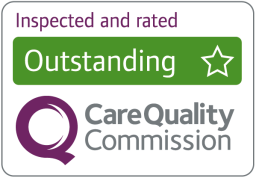About the procedure
If you want to book yourself in to be sterilised, you’ll need a referral to a gynaecologist from either your GP or local sexual health clinic. The gynaecologist will operate.
To get a sterilisation:
make an appointment with your doctor - find a local GP in the UK
or make an appointment at your local sexual health clinic
Pre-procedure counselling
Before having the operation, you’ll usually have to go to a counselling appointment, sometimes called an assessment appointment. If you have a partner, you can both attend the meeting.
During this appointment, a doctor or nurse will talk to you about the procedure. This appointment could include an internal pelvic examination to make sure there’s nothing unusual about your womb (uterus) or the fallopian tubes.
The clinician should give you unbiased information and not try to influence your decision. But the Royal Society of Obstetrics and Gynaecology advises against getting sterilised before the age of 30 because there’s a high chance that those under 30 will regret the procedure. The clinician may advise you to wait until you’re over 30. Many people challenge this guidance because they believe it’s their right to choose.
The clinician should discuss the following during the appointment:
why you’re choosing sterilisation over other contraception methods
alternative methods of contraception
your medical history
the need for contraception while waiting for the sterilisation procedure
the fact that this is a permanent method of contraception that’s difficult to reverse and can’t be done on the NHS
they will explain the procedure fully – including possible complications – and provide written information about the operation
Real contraceptive experiences
Recovery was about 5ish days, then I felt no pain or twinges. The first few days I had belly button pain where the cut was and some cramping pain under my ribs because of the gas that they had put into my belly during the operation. By day 3 I was nearly back to normal and definitely so by day 5. I took 2 days off work. My periods are heavier now, I guess this is what they are naturally, but I was using the pill before the sterilisation and that made them lighter.
Preparing for surgery
You’ll need to take a few days off work to recover from the surgery and general anaesthetic effects.
You’ll usually be able to go home the same day, but you’ll need another adult to accompany you home from the hospital. It’s illegal to drive for 24 hours after a general anaesthetic, so if you drove to your appointment, you’ll need to arrange a different way to get home.
How the surgery works
The surgeon operates by making 2 small cuts to the skin of the abdomen.
One cut is near the belly button. This cut is for inserting a fibre optic cable with a light and camera at the end that sends images to a screen so that the surgeon can see what they’re doing. This part of the procedure is known as a laparoscopy.
Once the surgeon can see inside the pelvis, they make another cut to insert the instrument that holds the clips and places them over the fallopian tubes.
To make room to work within the abdomen, carbon dioxide gas is gently pumped into the abdomen to create spaces between the organs. In this way, the surgeon can work safely on the fallopian tubes without damaging the bowel.
Sometimes the operation is done through a single, longer cut. This may be done when, for example, there’s been previous pelvic surgery causing scarring. It could also be done if the person having the operation has a high BMI.
Everything you wanted to know about sexual health and wellbeing - your questions answered by our expert team.



